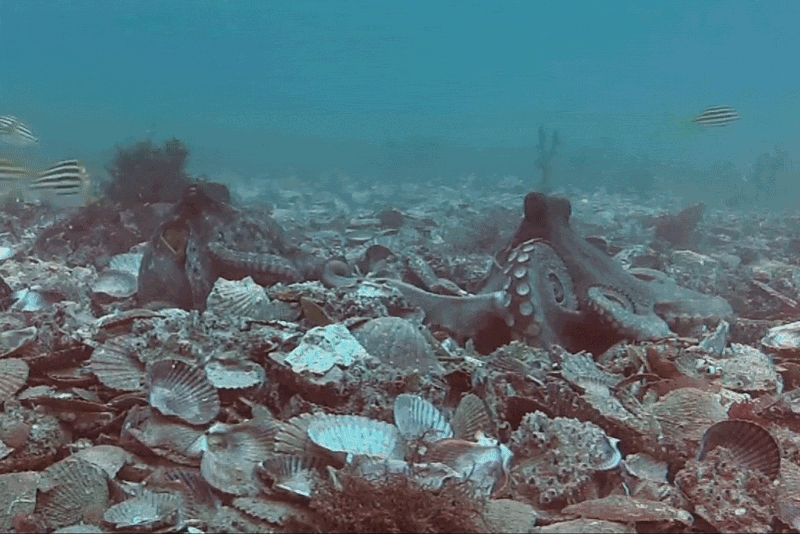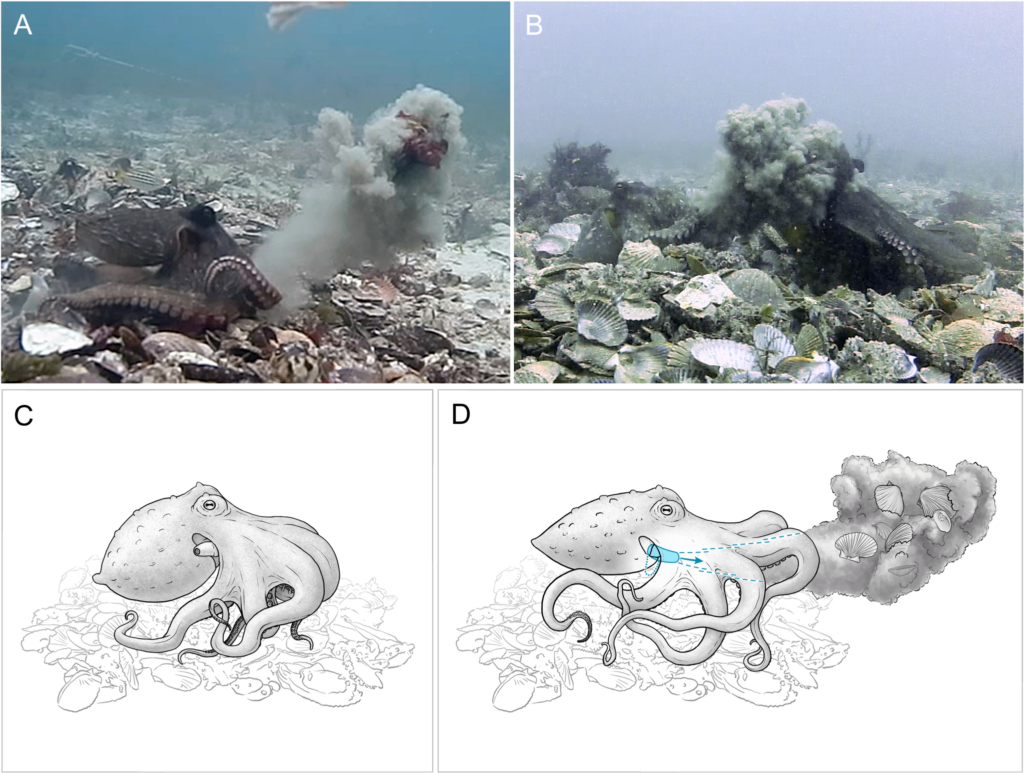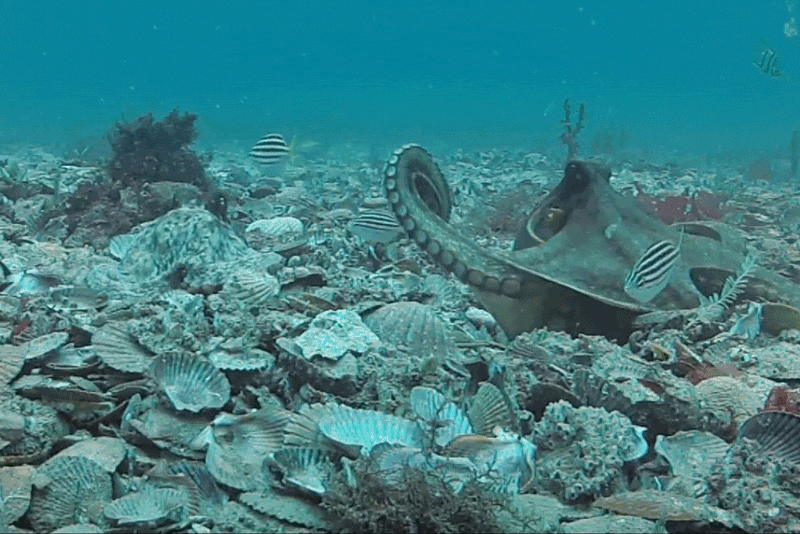
—via University of Sydney
A scientist at the University of Sydney and his colleagues have observed wild octopuses throwing silt, shells and algae underwater—sometimes hitting other cephalopods.
The research was published November 9th, 2022, in the journal PLOS ONE with the subjects being wild specimens of Octopus tetricus, the Gloomy Octopus, found in the subtropical waters of Eastern Australia and New Zealand. It is considered a member of the widespread Common Octopus, Octopus vulgaris, group.

In one instance, the researchers watched a female O. tetricus octopus repeatedly launch silt at a male that had been trying to mate with her, with the male frequently ducking to avoid the hits.
Professor Peter Godfrey-Smith, the study’s lead author from the University of Sydney’s School of History and Philosophy of Science and Charles Perkins Centre who wrote Other Minds: The Octopus, the Sea, and the Deep Origins of Consciousness, said: “In some cases, the target octopus raised an arm up between itself and the thrower, just before the throw, perhaps in recognition of the imminent act.”

Generally, females were more likely to throw than males.

During observations, octopuses also threw the remains of their meals and other materials to clean their dens.
There was even a case where they hurled silt towards one of the researchers’ cameras, and another two cases where thrown “weapons” hit fish.
References
In the line of fire: Debris throwing by wild octopuses
Peter Godfrey-Smith, David Scheel, Stephanie Chancellor, Stefan Linquist, Matthew Lawrence
Published: November 9, 2022
https://doi.org/10.1371/journal.pone.0276482
https://journals.plos.org/plosone/article?id=10.1371/journal.pone.0276482#




